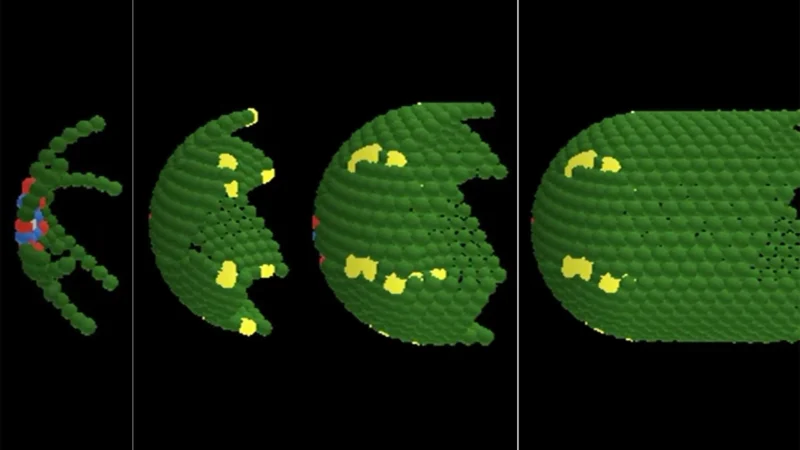Quick Takeaways
-
Tissue Organization Blueprint: Researchers discovered five fundamental rules explaining how the body maintains tissue structure amidst constant cell renewal, likening it to a ’tissue code’ guiding organization over time.
-
Mathematical Modeling: Using simulations, the team identified core biological rules governing cell division timing, direction, and lifespan, demonstrating the structured choreography behind tissue stability.
-
Broad Applicability: These rules may extend beyond the colon to various tissues (skin, liver, brain), providing insights into healing, birth defects, and diseases when the ’tissue code’ is disrupted.
- Implications for Future Research: The findings could enhance the Human Cell Atlas and open new avenues in cancer biology by identifying how disruptions in the tissue code lead to tumor growth, prompting further experimental validation.
Revealing the Blueprint of Life
Every day, our bodies replace billions of cells, yet tissues remain perfectly organized. Researchers from ChristianaCare and the University of Delaware have possibly cracked this enigmatic process. They identified just five fundamental rules that describe how our tissues maintain their complex structures over time. This groundbreaking work, combining mathematical modeling with cancer biology, offers a new perspective on living systems. Scientists can now view these rules as a “tissue code,” akin to the genetic code that governs our biological functions.
Transitioning from traditional methods, the team utilized computer simulations to analyze how cells behave. This innovative approach allows for a deeper understanding of the colorectal lining, where cells renew every few days but retain a stable structure. The core rules include timing of cell division, sequence and direction of division, and cell lifespan. Together, these elements form a choreography that ensures tissues stay organized and functional even amid constant cellular turnover.
The Future of Healing and Discovery
These findings extend beyond the colon, potentially affecting various tissues like skin, liver, and brain. Understanding this “tissue code” could revolutionize our grasp of healing, birth defects, and cancer development. Tissues don’t just change erratically; they possess a guiding precision. In fact, this research offers insights into how cells return to their organized state following injury or damage.
Moreover, this study aligns with national initiatives aimed at uncovering the fundamental principles of living systems. It paves the way for further exploration of how disruptions to the tissue code might lead to diseases like cancer. Next steps include validating the mathematical models and applying them to real-world scenarios. These endeavors could be pivotal in enhancing our ability to understand and potentially rectify cellular malfunctions. This collaboration between disciplines exemplifies how innovative thinking can spark new questions and discoveries in the ongoing journey of science.
Stay Ahead with the Latest Tech Trends
Dive deeper into the world of Cryptocurrency and its impact on global finance.
Explore past and present digital transformations on the Internet Archive.
TechV1

